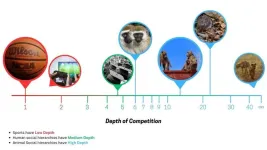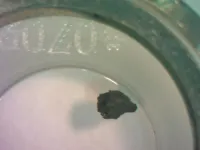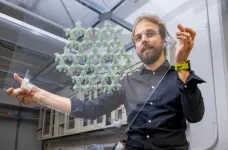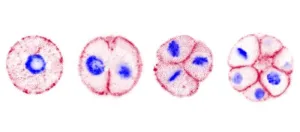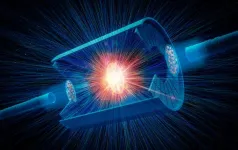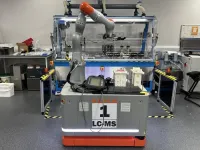(Press-News.org) University of Michigan researchers have added a new dimension to the mathematics used to predict the outcomes of all manner of competitions, including sports, games and social hierarchies in both humans and animals.
This dimension, which they call "depth of competition," can be integrated into a variety of important and lucrative fields. It could, for instance, help project winners of match-ups in sports, forecast consumer preferences, rank universities and evaluate hiring practices.
But it also provides a single framework to compare and glean insights from a wide spectrum of competitive interactions. As long as the researchers have data, be it from board games or baboon fights, their model can calculate the depth of any competition with a winner and loser.
"The model doesn't know if it's getting a sports data set or an animal data set," said Max Jerdee, a doctoral student in physics at U-M and an author of the new study. "What we're trying to do is build a general way of measuring inequality in a bunch of these different settings."
In this framework, the more unequal a competition, the deeper it is. In deeper competitions, then, the competitors are more stratified by their skill and status. So it might be surprising to learn that, in this context, human games and sports end up at the shallow end of the spectrum.
But this is by design, said Mark Newman, U-M professor of physics and complex systems.
"A game like basketball, for example, is not actually a shallow sport," Newman said. "There's a huge range of abilities and you can play at many different levels. But people don't because there wouldn't be any point having the average high schooler going against an NBA professional."
Even within the NBA, worse teams have better odds to draft better young players onto their teams as a pathway to improvement, Jerdee pointed out.
"Saying something is shallow may have a negative connotation, but you could also say it's more competitive, less predictable or more exciting," Jerdee said. "They're all describing the same thing."
While humans have norms and structures to promote parity and exciting competitions, other animals do not.
Consider chickens, the animal responsible for the expression "pecking order." Within a flock, there is a clear hierarchy where stronger birds peck those lower in the order with very little risk of "losing" the competition or being bested in a display of dominance.
So, using Jerdee and Newman's assessment, basketball has a depth of less than 1 layer while chickens' hierarchy is closer to 20 layers. The social hierarchy of hyenas is even more rigid and predictable, with a depth of more than 100 layers.
Competitive interactions in human society, including university rankings and social hierarchies within high school friend groups, land between sports and animal competitions in terms of depth.
Beyond assessing the depth of a competition, the new model can also predict the "winner" of certain competitions. The method could thus be used to assess university rankings, to project consumer preference, or to predict the outcome of sporting events, even between competitors who have never met before.
To demonstrate this predictive capability, the team showed that the 2022 U-M football team would have had an 89% chance of beating the University of Wisconsin had they played one another.
END
'Shallow' sports and 'deep' social hierarchies: Not all pecking orders are created equal
2024-11-06
ELSE PRESS RELEASES FROM THIS DATE:
New PFAs testing method created at UMass Amherst
2024-11-06
AMHERST, Mass. — University of Massachusetts Amherst researchers have discovered a new way to detect per- and polyfluoroalkyl substances (PFAS) in water. This marks an important step forward in creating testing devices that are simpler, more cost-effective, faster and generally more accessible than existing methods.
PFAS, the so-called forever chemicals, have been recognized as a concerning pollutant.
These chemicals persist in the environment because they resist breaking down and pose significant health threats. Exposure to these chemicals is linked to various cancers ...
Asteroid grains shed light on the outer solar system’s origins
2024-11-06
Tiny grains from a distant asteroid are revealing clues to the magnetic forces that shaped the far reaches of the solar system over 4.6 billion years ago.
Scientists at MIT and elsewhere have analyzed particles of the asteroid Ryugu, which were collected by the Japanese Aerospace Exploration Agency’s (JAXA) Hayabusa2 mission and brought back to Earth in 2020. Scientists believe Ryugu formed on the outskirts of the early solar system before migrating in toward the asteroid belt, eventually settling into an orbit between Earth and Mars.
The team analyzed Ryugu’s particles for signs of any ancient magnetic field that might have been present ...
Grant supports finding brain-inspired ways to develop low-energy computing
2024-11-06
The human brain is an astonishing organ, as any neuroscientist can attest. And its ability to collect, store, analyze and use information is intriguing to physicists, engineers and computer scientists, too.
Benjamin Jungfleisch, associate professor of physics at the University of Delaware, is among them.
Jungfleisch, who joined UD’s faculty in 2018, is an expert in magnon spintronics. He uses lasers to explore the dynamics of magnetic nanostructures — tiny magnets that can be used to ...
People engaging in self-harm find support on Reddit. But is that community helping them?
2024-11-06
A new study from the University of Georgia suggests people posting in Reddit’s r/selfharm community are likely seeking support for negative emotions.
While sharing traumatic events online can be cathartic, the researchers caution that subreddits can’t provide the same type of mental health help and support face-to-face interactions and professional help can.
“We don’t know the accuracy of the information that’s being shared in these communities about nonsuicidal self-injury,” ...
The egg or the chicken? An ancient unicellular says egg!
2024-11-06
Chromosphaera perkinsii is a single-celled species discovered in 2017 in marine sediments around Hawaii. The first signs of its presence on Earth have been dated at over a billion years, well before the appearance of the first animals. A team from the University of Geneva (UNIGE) has observed that this species forms multicellular structures that bear striking similarities to animal embryos. These observations suggest that the genetic programmes responsible for embryonic development were already present before the emergence of animal life, ...
Coping and resilience aids parents of disabled children, study says
2024-11-06
OXFORD, Miss. – For parents of children with disabilities, finding time to focus on themselves may be difficult. However, a new study finds that the right coping strategies and resilience can significantly help manage the challenges of raising children with special needs.
That is the key finding from research published in the International Journal of Developmental Disabilities that studied families with neurodevelopmentally disabled children in Ghana to see what helps parents cultivate healthy, happy lives for themselves and their children.
“Our main interest ...
Lupus Research Alliance announces inaugural recipients of Translational Bridge Award
2024-11-06
New York, NY. November 6, 2024. The Lupus Research Alliance (LRA) is excited to announce the first-ever recipients of the Translational Bridge Award (TBA), established this year to accelerate the translation of groundbreaking research into potential treatments and diagnostics for lupus. The award aims to propel high-potential projects from LRA-funded foundational discoveries with strong commercialization potential or an opportunity for clinical evaluation. Five exceptional researchers have been awarded the 2024 Translational Bridge Award to tackle pressing ...
Brain stars hold our memories
2024-11-06
A study published in Nature by researchers at Baylor College of Medicine changes the way we understand memory. Until now, memories have been explained by the activity of brain cells called neurons that respond to learning events and control memory recall. The Baylor team expanded this theory by showing that non-neuronal cell types in the brain called astrocytes – star-shaped cells – also store memories and work in concert with groups of neurons called engrams to regulate storage and retrieval of memories.
“The prevailing idea is that the formation and recall of memories only involves neuronal engrams that are activated by certain ...
Imaging nuclear shapes by smashing them to smithereens
2024-11-06
UPTON, N.Y. — Scientists have demonstrated a new way to use high-energy particle smashups at the Relativistic Heavy Ion Collider (RHIC) — a U.S. Department of Energy (DOE) Office of Science user facility for nuclear physics research at DOE’s Brookhaven National Laboratory — to reveal subtle details about the shapes of atomic nuclei. The method, described in a paper just published in Nature, is complementary to lower energy techniques for determining nuclear structure. It will add depth to scientists’ understanding of the nuclei that make up the ...
AI-driven mobile robots team up to tackle chemical synthesis
2024-11-06
Researchers at the University of Liverpool have developed AI-driven mobile robots that can carry out chemical synthesis research with axtraordinairy efficiency.
In a study publishing in the journal Nature, researchers show how mobile robots that use AI logic to make decisions were able to perform exploratory chemistry research tasks to the same level as humans, but much faster.
The 1.75-meter-tall mobile robots were designed by the Liverpool team to tackle three primary problems in exploratory chemistry: performing the reactions, ...
